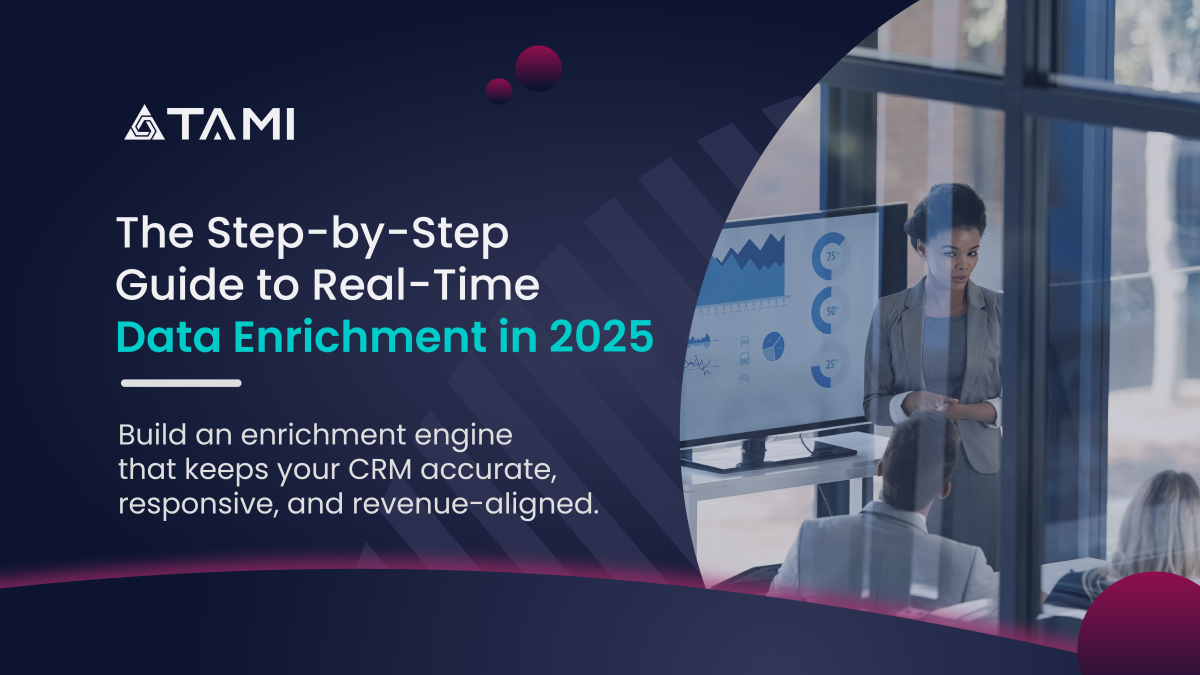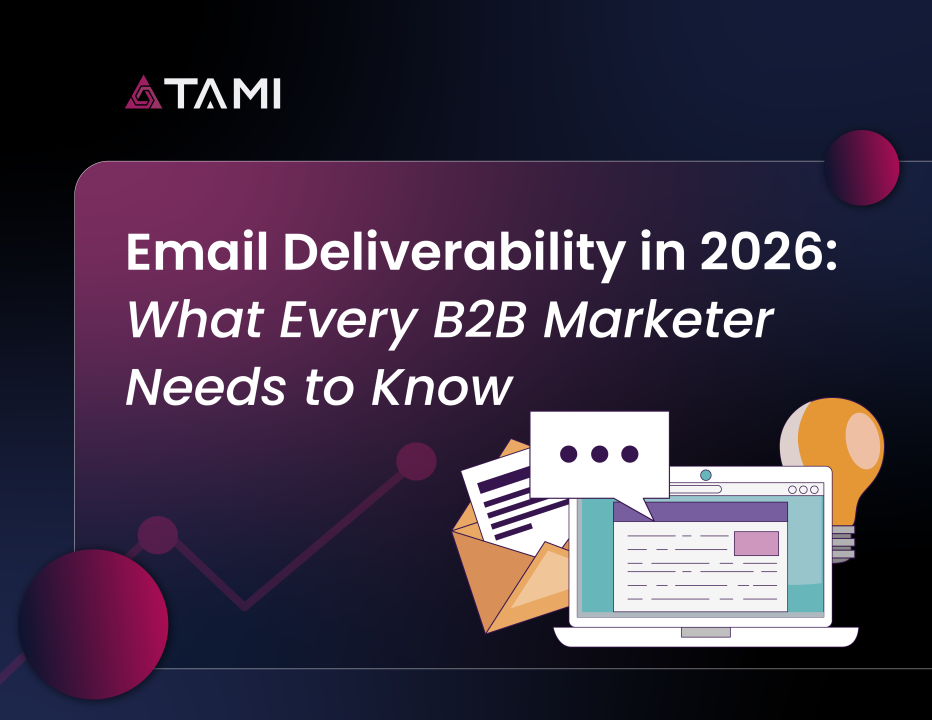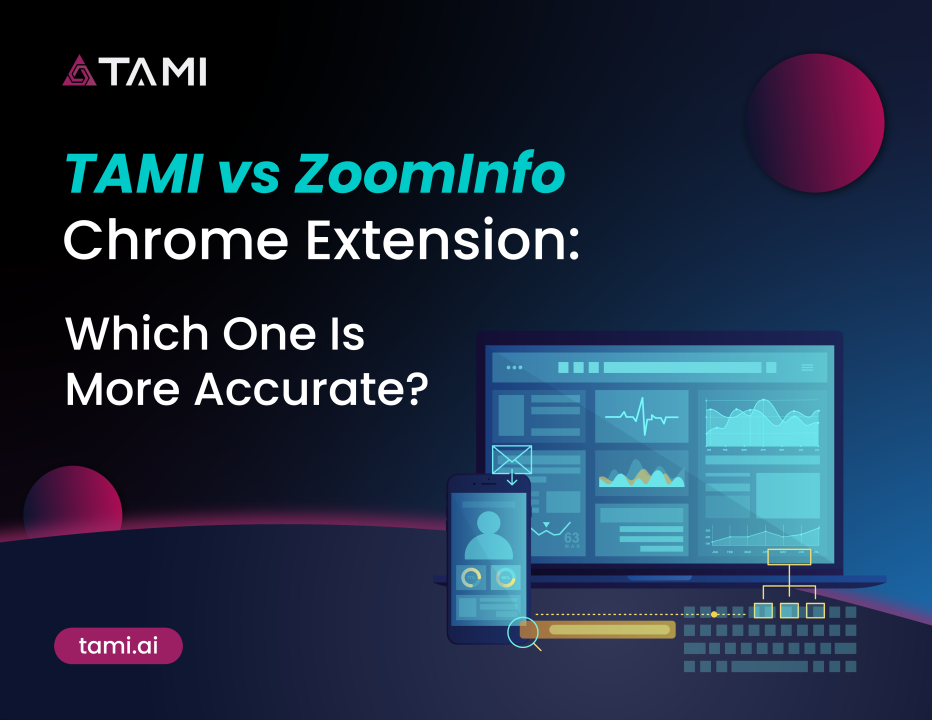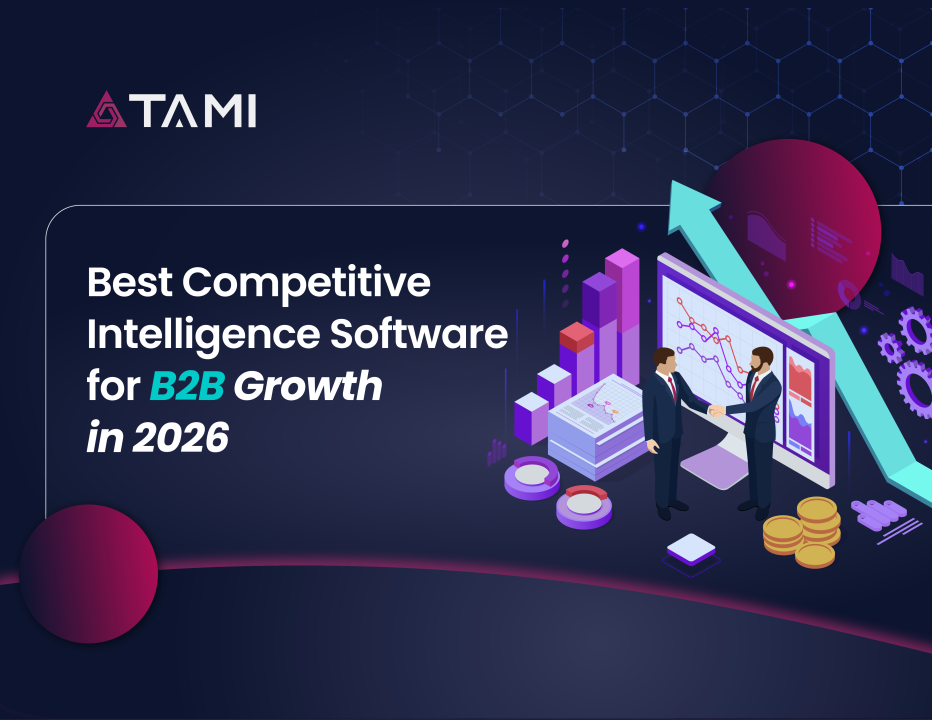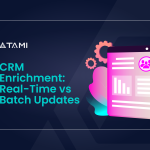
CRM Enrichment: Real-Time vs Batch Updates
18/06/2025
How to Find eCommerce Merchants Using Stripe
09/07/2025In 2025, data enrichment is foundational to a company’s success. If your CRM still depends on manually added contacts, occasional list uploads, or quarterly data audits, you’re not just falling behind. You’re actively harming your sales pipeline.
This guide breaks down what data enrichment should look like today. It’s not just about appending a few fields—it’s about building a complete enrichment engine that keeps your system accurate, responsive, and revenue-aligned.
From acquisition to activation, here’s what modern B2B teams expect from a serious enrichment solution and how tools like TAMI are setting the standard.
Why Data Enrichment Is Core to B2B Revenue Strategy
Every contact in your CRM is either an opportunity or an obstacle. The problem? Most CRMs are still filled with outdated emails, misclassified industries, duplicate accounts, and contacts who haven’t worked at that company in years.
Enrichment solves this. Not by giving you more leads, but by making sure the ones you already have are actually usable. It means knowing who the buyer is, what tech they use, when they change roles, and whether their company is scaling or shrinking.
In short: enrichment gives you the context your sales and marketing teams need to prioritize, personalize, and convert.
Step 1: Start with a Ground-Level Audit
Before real-time anything, most teams need to begin with a cleanup. In 2025, enrichment platforms aren’t just about adding data, they’re about repairing the damage that’s already been done.
This includes deduping records, removing bounced contacts, validating email addresses, updating stale job titles, and reclassifying accounts that may have pivoted industries or business models.
For example, a logistics SaaS provider might find 15% of its CRM marked as “retail,” when those accounts are actually cross-border ecommerce brands using outdated NAICS codes. Tools like TAMI use AI to remap these records to the real verticals based on actual web activity and technology use, not legacy metadata.
Step 2: Enrich People with Role-Relevant, Live Data
A VP of Sales in 2023 is not the same as a VP of Sales in 2025. They might now oversee revenue operations. Or own MarTech. Or be a founder-operator wearing five hats.
Modern enrichment should identify not just the title, but what that person actually owns and whether they’re still in the role. This requires pulling from a mix of live web sources, internal job tracking signals, and validation endpoints.
TAMI’s enrichment layer, for instance, goes well beyond name and title. It tracks real-world indicators like recent role changes, company tenure, and even whether a decision-maker was active in a prior conversation across accounts; essential for ABM strategies.
In this case, enrichment isn’t just about filling fields. It’s about confirming that the person is still relevant to the buying process, right now.
Step 3: Don’t Ignore the Account Layer
Contact data without account intelligence leads to misalignment between SDRs and AEs, or poor-fit demos that never convert. In 2025, account-level enrichment needs to capture everything from funding rounds to ecommerce platform switches to new region expansions.
This is where static CRM fields fall short. A company using Shopify Plus with Klaviyo, ShipBob, and Stripe behaves differently than a generic “retail” lead tagged as 51–200 employees.
TAMI surfaces these kinds of patterns in real time, so reps know who’s scaling, who’s consolidating tools, and who’s mirroring your best customers in structure and behavior. And because the data is updated continuously, it’s not something you have to re-upload every quarter. It’s just there, ready to act on.

Step 4: Make Enrichment Continuous, Not Periodic
The biggest shift between legacy enrichment and 2025 enrichment is motion. You no longer enrich once per quarter or after a form fill. Enrichment happens every time something changes.
That means:
- When a contact switches jobs, your CRM updates
- When a company moves from WooCommerce to Shopify Plus, your SDR team is alerted
- When a dormant lead is acquired or rebrands, their account profile refreshes with new firmographics
TAMI delivers this through live CRM syncing, not flat files. You get alerts when meaningful changes happen, not when your team remembers to check.
And because everything is synced to your CRM or outbound platform (HubSpot, Salesforce, Pipedrive, etc.), you don’t have to rebuild your workflows every time something shifts.
Step 5: Real-Time Signals Are Now Table Stakes
Enrichment platforms in 2025 aren’t judged by how many contacts they have. They’re judged by how fast they detect change and how accurately they interpret it.
It’s not just about scraping LinkedIn for a new title. It’s about knowing that a Shopify merchant just added Recharge, that they’ve started shipping internationally, or that a competitor just churned and left an opening.
This is where most enrichment platforms fail. They provide static information, not signals. TAMI’s engine was built around real-time alerts because in B2B, timing isn’t everything, but it’s close.
When your team is first to reach out after a company switches tools, promotes a new CMO, or enters a new market, you’re not just relevant. You’re early.
Step 6: Clean and Refresh, Continuously
Data doesn’t just decay, it corrodes. Stale records pollute dashboards, break automations, and give marketing teams a false sense of scale.
In 2025, enrichment must include a continuous refresh layer that not only updates fields but also flags risk and decay. That includes:
- Bounced or risky email addresses
- Inactive companies or rebranded domains
- Contacts who’ve left but still sit in open opportunities
- Mismatched fields (e.g., tech tags that conflict with real usage)
TAMI handles this without you needing to trigger anything manually. Once set up, it operates like a cleaning crew running in the background of your pipeline, making sure the people you’re targeting are still targetable.
Final Thoughts
If you're evaluating data enrichment tools this year, the question isn’t “how many records do they enrich?” It’s: do they help you prioritize smarter, personalize better, and pivot faster?
A good data enrichment solution in 2025 cleans bad data as it adds new insights, tracks real company changes in real time, and syncs instantly with your sales stack, giving reps the context they need to act with confidence.
TAMI was built with that reality in mind. It doesn’t try to be flashy. It just quietly makes your CRM smarter, your reps sharper, and your targeting tighter, day after day. If that’s what your revenue engine needs, you don’t need more leads. You need better data. And that’s what we got. Book a free trial today and see for yourself.

